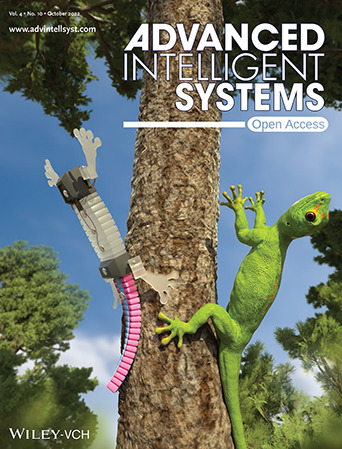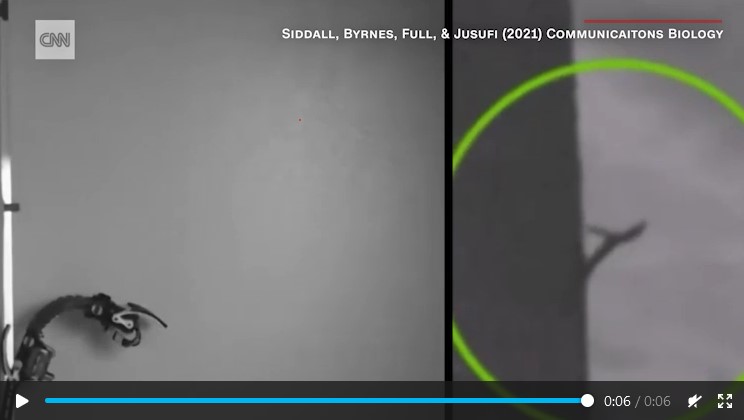Research Group Leader Prof. Dr. Ardian Jusufi
Overview

Prof. Dr. Ardian Jusufi conducted his formal training at U.C. Berkeley, Harvard University, and the University of Cambridge, UK.
After first serving as a lecturer at the University of Technology Sydney from 2016, Ardian was appointed as independent Max Planck Research Group Leader [~Associate Professor] in 2018, where served as Faculty at International Max Planck Research School IMPRS-IS and Associate Faculty of the ETH Center for Learning Systems through 2023. He is currently a research group leader at the Engineering Sciences Department of the Swiss Federal Laboratories for Materials Science and Technology. Ardian is Honorary Associate Professor of Macquarie University. Moreover, Ardian is an Associate of the ETH and University of Zürich Institute for NeuroInformatics INI as well as the Paleontological Institue. As an Editor of Institute of Physics Publishing Bioinspiration & Biomimetics, he handles peer-reviewed articles in his area of expertise encompassing biomimetic materials and mechanisms, experimental robotics, soft robotics, biomechanics and functional morphology.
Prof. Dr. Ardian Jusufi positions his highly interdisciplinary research at the interface of engineering robotics, materials science, and biomechanics. He specializes on soft active materials, biomimetics, and robotics inspired by original biomechanical discovery. Ardian is a pioneer in the biorobotic investigation of robust locomotion of robots underpinned by his discoveries of tails as control appendages enabling rapid disturbance rejection and multi-modal transitions. His research has been featured in leading journals including PNAS and Nature (both cover articles), Nature Communications bio, as well as Soft Robotics, Advanced Engineering Materials, and Current Biology.
With a goal to achieve the dream of life-like movement, he integrates soft actuators and flexible sensors made of hyperelastic silicone elastomers (containing liquid metal) and embeds them into a diving, soft robotic fish, for instance. Their integration enables new skills in swimming and arboreal robots to increase their ability to overcome obstacles. In contrast to robots with mostly hard components, the musculoskeletal system is capable of adapting to multiple dynamic perturbations simultaneously. Life-like movement not only expands upon robot capability, it also enables original discovery in experimental biomechanics. His research integrates robotics, ‘smart’ materials, with comparative biomechanics. In this spirit, Prof. Dr. Ardian Jusufi is a leader in robot locomotion enabled by biomimetic materials and mechanisms.
What is the research focus and the research group’s vision?
Soft Kinetic group is based at the Engineering Sciences Department
The past decade has presented a dramatic expansion in the development of mobile robots and the application of robotic systems to practical tasks. Despite the proliferation of computation and sensing at the small scale, robots still remain largely unable to access all but the most structured environments, and unable to reach the performances of natural systems. Physical intelligence development has lagged behind advances in AI. As the physicist Richard Feynman famously said: “What I cannot create, I do not understand”. The movement apparatus and bauplan are therefore subject of fundamental research.
The capability gap between nature and human-made devices is most apparent in locomotion. Biological organisms traverse various cluttered terrains (e.g. granular media) effortlessly, whereas even the most advanced robots get stuck. Biomechanical system robustness emerges from the interplay of materials and mechanics based solutions barely dreamt of by robotics engineers. Although novel computational solutions and biologically inspired mechanisms have advanced robot locomotion, most platforms are made of predominantly rigid parts, offering precision and control. By contrast, biological tissues consist in large part of water, making compliance ubiquitous in nature. Morphing structures such as fins, tails, and wings allow for shape changes on the body, thus enabling unparalleled multi-modal locomotion with multi-functional appendages. Soft active materials are now required to emulate and decipher the general principles of natural motion systems – Experimental robotics can advance motion science by breathing new life into physical models. Embodiment provides physical resilience by exploiting the morphological intelligence of the body to simplify control.
Experimental validation of gliding and climbing is measured in field research. However, the softest model systems are found under water. To this end, Dr. Jusufi’s research has shown that soft fluidic actuators made of silicone elastomers that enable shape changes on the body, facilitating body stiffness modulation during undulatory swimming in flow tanks. Electroactive polymers are also used in a fluid movement context. Fluidic soft sensors, in turn, provide proprioception for closed loop control.
Robophysical modelling thus unlocks nature’s secrets to maximum mobility and manipulation. Reverse-engineering nature’s patents offers design blueprints for resilient biomimetic devices that expand the reach of human experience with potential for diverse industry applications.


